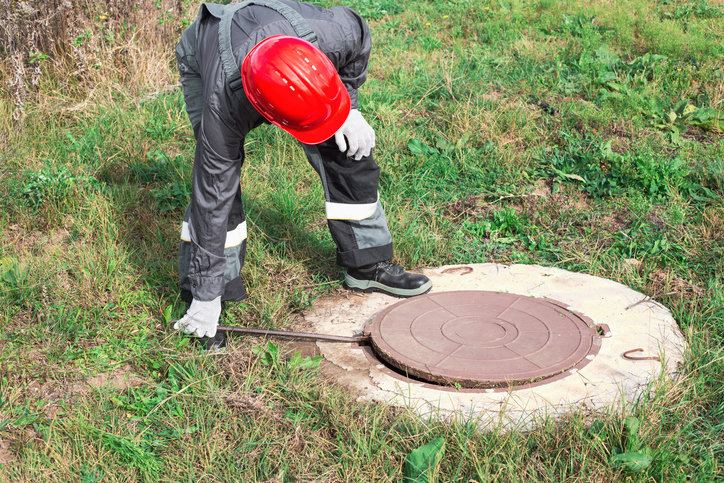3.18.24
What Homeowners Need to Know About Septic Systems

If your home has a septic system you need to know how to properly maintain it to extend its life—and the signs of trouble.
For homeowners, “out of sight, out of mind” is a foolhardy approach–especially when it comes to septic systems. In Michigan, we have 1.4 million septic systems in place. Yet many homeowners don’t understand these vital wastewater treatment systems.
A study commissioned by several Michigan conservation and water quality agencies uncovered these alarming findings in the Clinton Conservation District:
- About 30% of residents did not know they have a septic system.
- The average age of septic systems is 28 years old; half are likely older than 26 years old.
- 45% of respondents have not had their system pumped within the last five years.
Clearly, we collectively need to know more about residential on-site wastewater treatment. Let’s take a look at who has a septic system, why this home system matters so much and how to maintain one.
Who has a septic system?
Any home that is not connected to a municipal wastewater system has a septic system.
What does a septic system do?
Septic systems are designed to treat wastewater. Anything that goes down the drain or gets flushed down the toilet goes into the system.
From the drain lines in the house, waste goes to the septic tank buried in the ground outside. Solids settle to the bottom of the tank and liquids flow into the drainfield.
In the tank, bacteria start to break down much—but not all—of the solids. Over time solids accumulate and need to be pumped out periodically.
The drainfield is a system of pipes and gravel where bacteria continues to break down the waste that remains in the liquid. Gravity pulls the liquid down through the soil, naturally filtering it before it enters the ground water.
Watch this quick video from Michigan’s Department of Environment, Great Lakes and Energy (EGLE) to see more about how septic systems work. If you’d prefer a resource you can print out, get this Managing Your Septic System sheet from Michigan State University Extension.
What happens if a septic system fails?
In short, a failed septic system is a health threat. Untreated wastewater, with contaminants like nitrates and E. coli, can make its way into groundwater (the same groundwater that supplies your well) and surface waterways like creeks, ponds, rivers and lakes. Contact with untreated wastewater—whether in your backyard or at the beach—can lead to disease. Stomach cramps, vomiting, diarrhea and nitrate poisoning? No thanks!
What are signs of septic system failure?
When septic systems begin to fail homeowners may notice these changes indoors: slow drainage in sinks and tubs or drain and toilet backups in the lower levels of the home.
Outside, the drain field may be soggy and spongy to walk on. Also, there may be the smell of raw sewage.
How long does a septic system last?
With a high-quality design and build, as well as proper maintenance, a septic system can last up to 40 years. However, most systems have a lifespan of 20 to 30 years on average.
What does it cost to replace a septic system?
Sometimes only certain components need to be replaced. A new drainfield runs $3,000 to $10,000. A tank replacement typically costs between $3,000 and $6,000. Replacing an entire septic system can be as much as $15,000.
Properly maintain your septic system
To keep your septic system in good working order, follow these tips from EGLE:
- Have your septic tank inspected every three years and pumped when necessary. Pumping is typically needed every three to five years and costs between $250 and $600.
- Limit kitchen sink garbage grinder (disposal) use.
- Avoid pouring harsh products—like oils, grease, chemicals, paint, and medications—down the drain.
- Flush nothing down the toilet but human waste and toilet paper. Never flush baby wipes or other wet wipes, cat litter, cooking oil or grease, condoms, feminine hygiene products or cigarette butts.
- Keep cars and other vehicles parked away from the septic tank and drainfield. The weight of vehicles can compact the drainage gravel, damage pipes and shorten the system’s life.
- Direct water from the roof and gutters, sump pumps and other rainwater drainage systems away from your septic tank and drainfield.
- Repair plumbing leaks and use water-efficient fixtures to avoid overloading the system.
- Spread laundry washing throughout the week.
Covering the costs of septic system repairs
If your septic system is in need of repair or replacement and you don’t have the money on hand, a home equity loan can give you access to the cash you need. Give us a call at 800-991-2221 or apply online to get started.
 All loans subject to approval. Rates, terms, and conditions are subject to change and may vary based on credit worthiness, qualifications, and collateral conditions.
All loans subject to approval. Rates, terms, and conditions are subject to change and may vary based on credit worthiness, qualifications, and collateral conditions.



